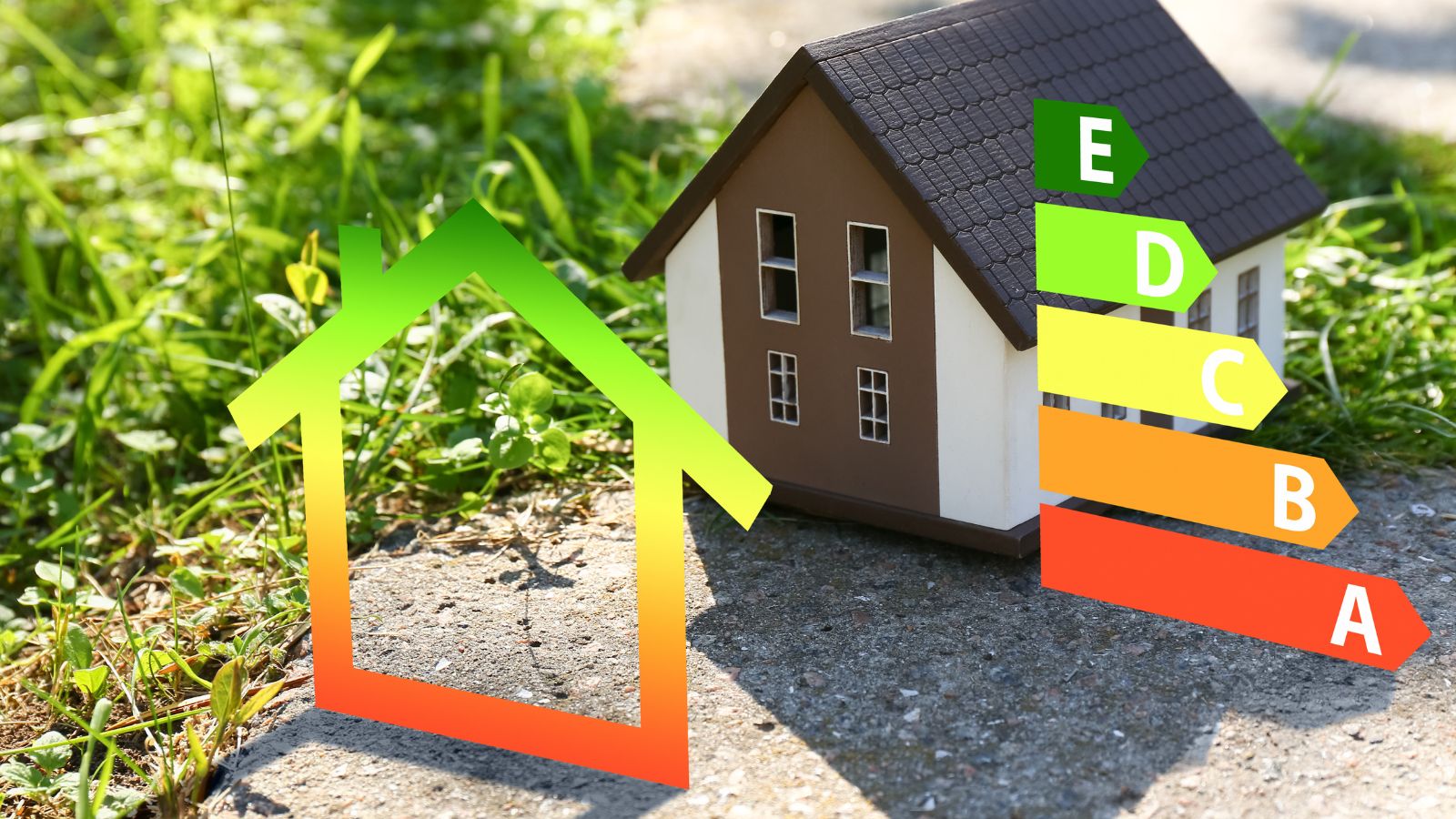Reducing energy consumption at home lowers utility bills, enhances comfort, and contributes to a sustainable future. Small adjustments, along with larger upgrades, can lead to significant improvements in efficiency. From optimizing insulation to integrating smart technology, every choice makes a difference. Implementing energy-saving solutions benefits both the environment and property value, making homes more attractive to future buyers. With the right approach, it’s possible to create a living space that maximizes efficiency while maintaining a high standard of comfort.

Improving Insulation for Better Temperature Control
A well-insulated home retains heat in winter and keeps interiors cool during summer, reducing the need for constant heating and cooling. Proper insulation in walls, ceilings, and floors minimizes temperature fluctuations, making indoor spaces more comfortable year-round. Upgrading insulation materials, such as spray foam or rigid foam boards, enhances performance compared to traditional fiberglass options. Weatherstripping around doors and windows seals air leaks, preventing drafts that force HVAC systems to work harder.
Attic insulation plays a crucial role in maintaining a stable indoor climate. Since heat rises, an inadequately insulated attic allows warmth to escape in winter and heat to penetrate in summer. Adding insulation with a high R-value improves efficiency, leading to lower energy bills. Similarly, insulating water pipes prevents heat loss, reducing the energy required to maintain hot water temperatures.
Investing in energy-efficient windows complements insulation efforts. Double—or triple-pane windows with low-emissivity coatings reduce heat transfer, keeping indoor temperatures more consistent. Window treatments such as thermal curtains or cellular shades provide an additional barrier against heat loss. A well-insulated home conserves energy and enhances overall comfort and long-term savings.
Upgrading to Energy-Efficient Appliances
Household appliances contribute significantly to energy consumption, making upgrades an effective way to reduce waste. Modern energy-efficient appliances use advanced technology to operate with minimal electricity while maintaining high performance. Refrigerators, dishwashers, and washing machines with ENERGY STAR certification consume less power without sacrificing functionality. These appliances also include features such as load-sensing technology, which adjusts energy use based on demand.
Replacing an old HVAC system with a high-efficiency model optimizes heating and cooling while lowering electricity costs. Heat pumps, for example, provide an energy-saving alternative to traditional furnaces and air conditioners. Smart thermostats further enhance efficiency by allowing temperature adjustments based on schedules and occupancy. Some models even learn user preferences, automatically optimizing heating and cooling cycles.
Lighting upgrades also contribute to lower energy consumption. LED bulbs use a fraction of the electricity required by incandescent lights and last significantly longer. Motion sensor lighting in areas such as hallways and outdoor spaces ensures energy is only used when needed. Combined with other energy-efficient appliances, these upgrades lead to substantial cost savings over time.
Optimizing Heating and Cooling Systems
Heating and cooling account for a large portion of household energy use, making efficiency improvements highly beneficial. Routine maintenance ensures HVAC systems operate at peak performance, preventing unnecessary energy waste. Changing air filters regularly prevents blockages that force systems to work harder. Annual professional servicing further enhances efficiency by identifying potential issues before they escalate.
Smart thermostats provide greater control over indoor climate settings. These devices adjust temperatures automatically based on occupancy patterns, ensuring energy isn’t wasted on heating or cooling empty spaces. Zoned heating and cooling systems offer additional efficiency by directing air to specific rooms rather than conditioning the entire home.
Ceiling fans improve airflow, reducing the need for excessive heating or cooling. In winter, running fans in reverse circulates warm air trapped near the ceiling, distributing heat more evenly. During summer, fans create a cooling effect, allowing for higher thermostat settings without sacrificing comfort. When combined with proper insulation and energy-efficient windows, these measures enhance overall heating and cooling efficiency.
Switching to Renewable Energy Sources
Incorporating renewable energy reduces reliance on conventional power sources and lowers electricity bills. Solar panels convert sunlight into electricity, providing a sustainable energy solution with long-term benefits. While the initial investment can be substantial, tax incentives and financing options make solar installations more accessible. Over time, savings on energy costs often offset installation expenses.
Wind and geothermal energy also offer renewable alternatives. Small-scale wind turbines generate power for residential use in areas with sufficient wind exposure. Geothermal heating and cooling systems utilize stable underground temperatures to regulate indoor climates efficiently. Though these systems require an upfront investment, they provide consistent energy savings and environmental benefits.
Battery storage solutions enhance renewable energy efficiency by storing excess power for later use. This ensures electricity is available even when sunlight or wind conditions fluctuate. Combining renewable energy with traditional sources creates a balanced approach, reducing overall dependence on the grid. As technology advances, renewable energy options continue to become more accessible and cost-effective.
Enhancing Water Efficiency
Reducing water consumption conserves resources and decreases energy used for heating and pumping water. Low-flow faucets and showerheads maintain strong water pressure while using less water, leading to lower utility bills. Dual-flush toilets provide options for different flush volumes, further minimizing water waste.
Tankless water heaters improve efficiency by heating water on demand rather than maintaining a constant supply. These systems reduce standby energy loss, providing long-term savings compared to traditional storage water heaters. Insulating water pipes helps retain heat, reducing the energy needed to maintain hot water temperatures.
Rainwater harvesting systems collect and store rainwater for outdoor irrigation and other non-potable uses. This reduces reliance on municipal water supplies while supporting sustainable landscaping. Smart irrigation systems further optimize water use by adjusting watering schedules based on weather conditions. Combining these strategies enhances overall water efficiency, reducing both energy use and utility costs.
Utilizing Smart Home Technology
Smart home technology offers an efficient way to monitor and manage energy use. Smart thermostats, lighting, and appliances allow for automated control, reducing unnecessary power consumption. Remote access through mobile apps provides the flexibility to adjust settings from anywhere, ensuring energy isn’t wasted when no one is home.
Smart lighting systems adjust brightness based on occupancy or time of day. Dimmers and programmable timers enhance efficiency by ensuring lights are only used when necessary. Home energy monitors track electricity usage in real-time and identify areas for improvement. These insights help homeowners make informed decisions about energy-saving habits.
Voice-controlled assistants integrate with smart home systems, providing convenient access to energy-saving features. For example, adjusting the thermostat or turning off lights can be done with a simple voice command. As technology advances, smart home solutions continue to evolve, offering more ways to improve energy efficiency while enhancing convenience.
Landscaping for Energy Conservation
Strategic landscaping reduces energy consumption by providing natural insulation and shade. Deciduous trees planted on the south and west sides of a home offer cooling shade in summer while allowing sunlight to warm interiors in winter. Evergreen trees act as windbreaks, reducing heat loss by blocking cold winter winds.
Ground cover plants and mulch help regulate soil temperature, reducing the energy needed for heating and cooling. Green roofs and living walls provide additional insulation, keeping indoor temperatures stable. Permeable paving materials prevent heat buildup, contributing to a more comfortable outdoor environment.
Outdoor shading structures such as pergolas and awnings further enhance energy efficiency. These features block direct sunlight, reducing indoor temperatures during hot months. Combining landscaping techniques with other efficiency improvements creates a well-rounded approach to reducing overall energy use while enhancing curb appeal.
Maximizing Energy Savings with Daily Habits
Simple daily habits contribute to long-term energy savings. Turning off lights and appliances when not in use prevents unnecessary energy consumption. Unplugging electronics when not in use eliminates standby power drain, which can account for a significant portion of wasted energy.
Using cold water for laundry reduces water heating costs without compromising cleanliness. Air-drying clothes instead of using a dryer further minimizes energy use. Cooking with energy-efficient methods, such as using a microwave instead of an oven for small meals, also helps conserve electricity.
Adjusting thermostat settings slightly can lead to substantial savings. Lowering the heat by a few degrees in winter or raising the air conditioning temperature in summer reduces overall energy consumption. Practicing these small habits consistently leads to noticeable reductions in utility costs over time.
Selling an Energy-Efficient Home
A home with energy-efficient upgrades stands out in the real estate market, attracting buyers looking for long-term savings and sustainability. Features such as upgraded insulation, efficient appliances, and smart technology add value while making a property more appealing. Highlighting these improvements helps potential buyers understand the benefits of reduced utility costs and enhanced comfort.
Buyers often look for homes with modern energy-efficient features, making well-maintained HVAC systems, solar panels, and water-saving solutions key selling points. Providing utility bill comparisons or energy audit results showcases the financial advantages of these upgrades. With rising energy costs, efficiency improvements make a home more desirable and competitive in the market.
Selling a home with energy-efficient enhancements requires the right strategy to emphasize its benefits effectively. When the time comes to sell, reach out to discuss how to position your property for maximum value and attract buyers who appreciate the savings and comfort that efficiency upgrades provide.





